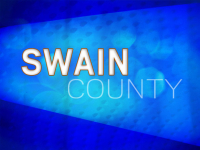Blundering upon a Smokies icon
I’ve always been interested in the processes by which we discover things. Being a naturalist, I’m most interested in the processes by which entities like birds, plants, special places, etc., are located.
I’m a firm believer that preparation generally pays off. That is, if you study up on something — say a bird — and anticipate where you might locate it, your chances are considerably enhanced that you will encounter it. Last year, for instance, I spotted my first-ever Swainson’s warbler in this manner.
Wanting very much to see one, I read the literature regarding the bird’s range distribution. The nearest place where they have commonly been encountered in North America during the breeding season is the headwaters region of the Chattooga River. That was handy enough. Before driving down the Bull Pen Road southeast of Highlands, I studied the bird’s image in several field guides and listened to its call notes and song on tapes.
My first stop was at a pullover above the old Iron Bridge that overlooked a rhododendron thicket, their preferred habitat in the Southern Applachians. After about 45 seconds, I heard a bird singing. Could it be? Yep, it could. I trained my binoculars on the singing bird and there was a Swainson’s warbler, considered by many to one of the most elusive and reclusive birds.
I also think one can almost “will” things into existence. That is, if you want to find something badly enough, you probably can. I have located many very rare plants by putting on my blinders and looking for and thinking about nothing else. Sometimes it takes months, but I’ve never come up empty-handed. If it’s out there, I believe you can locate it if you really and truly want to do so.
And then there is what I think of as my “blunder method.” That is, you simply go out and see what you happen to stumble upon my pure blind luck. Sort of like the proverbial blind pig that stumbles upon an ear of corn now and again. I employed this method last week while camping at the Evins State Park just off the western edge of the Cumberland Plateau northwest of Smithville, Tenn.
Related Items
On Thursday morning I picked a trail and went out with no particular objective in mind except to observe the extensive stands of Goldie’s and glade ferns reputed to be distributed along the first half mile or so of the trail. After passing through the ferns, I followed the trail down a steep ravine to Center Hill Lake.
It started to get hot and buggy. I was thirsty and hadn’t brought any water. This is the point at which one either returns to the campsite or pushes on to see just what can be blundered upon. I pushed on and somehow got off the established trail. Not wanting to backtrack, I decided to hump it up the ridge in the general direction of where I’d parked my truck. The ridge slope was really steep; so much so, that I had to stop and rest every few minutes.
“Well now,” I thought to myself, “this is going to be really good. No telling what I’ll find having gotten lost and ending up climbing the side of a mountain.”
Sure enough, just as I reached a road near my truck, I saw chestnut husks littering the ground. Looking up, there in full bloom was an American chestnut tree. I examined the leaves to make sure it wasn’t one of the disease-resistant foreign species that might have become naturalized at the park. Nope, it was the genuine article.
I have seen American chestnut trees flowering and fruiting at several places here in Smokies region, most notably near Wayah Bald above Franklin. But all of those were small and obviously already blighted by the fungus first introduced to America about 1910 in New York City.
This tree showed absolutely no signs of blight. The bark was firm without any of the fissures that indicate infestation. The leaves were bright and glossy. And it was covered with snowy-cream, spike-like flowers.
Later on, I roughly measured the tree. At breast height, it was nearly 60 inches in circumference and about 18 inches in diameter. I’d estimate it stood over 50 feet in height, and it displayed a nice wide canopy spread in spite of being crowed by several adjacent trees. What a sight!
Carl Halfacre, the manager of Evins State Park, was just as excited as I was to learn about such a tree on the park’s grounds. Along with cerulean warblers recently discovered breeding there, this wonderful tree will no doubt become one of the park’s claims to fame. Many people would travel a goodly distance just to see a healthy American chestnut in full flower.
I did, however, fail to mention to Ranger Halfacre that I’d been employing my “blunder method” of exploration to make the discovery.
Editor’s note: This Back Then column by George Ellison was first published in July 2003.
George Ellison wrote the biographical introductions for the reissues of two Appalachian classics: Horace Kephart’s Our Southern Highlanders and James Mooney’s History, Myths, and Sacred Formulas of the Cherokees. In June 2005, a selection of his Back Then columns was published by The History Press in Charleston as Mountain Passages: Natural and Cultural History of Western North Carolina and the Great Smoky Mountains. Readers can contact him at P.O. Box 1262, Bryson City, N.C., 28713, or at This email address is being protected from spambots. You need JavaScript enabled to view it..









